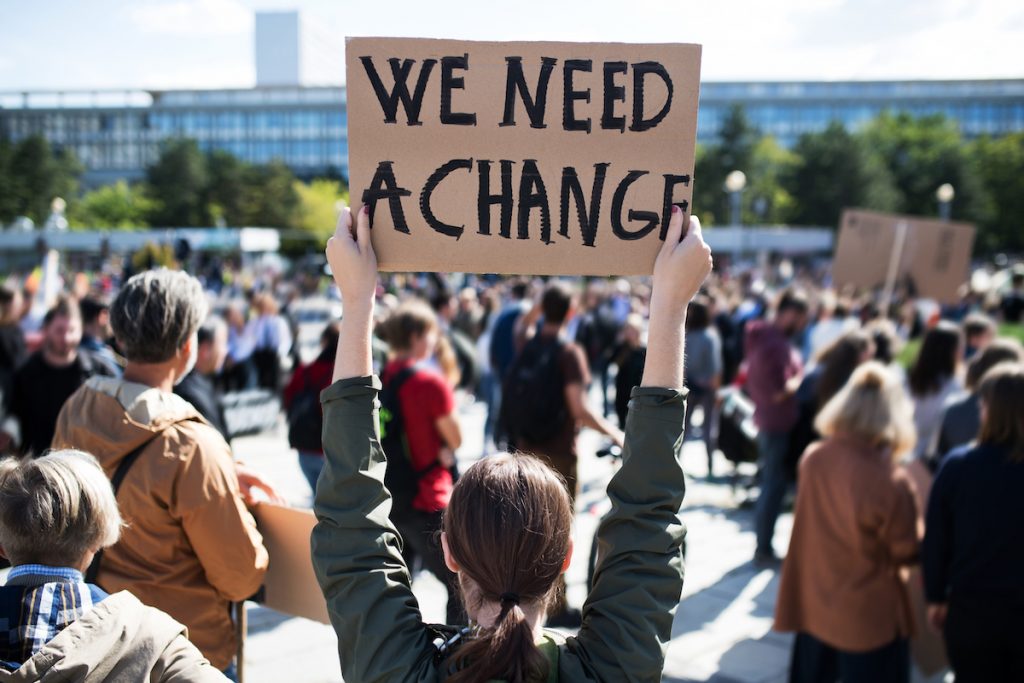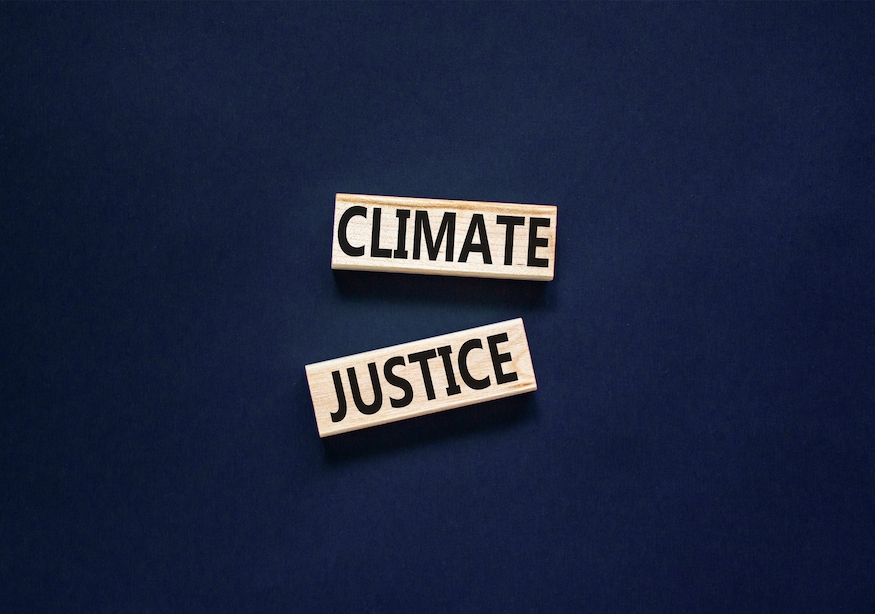
The term Climate Anxiety describes a range of psychological, physiological, and behavioural responses experienced as a reaction to a perceived threat to oneself, others, and/or the environment which are related to climate change (Clayton, 2020). While not pathological in and of itself, climate anxiety can be considered an adaptive response when it stimulates positive behaviours and actions (e.g., pro-environmental behaviours). However, maladaptive climate anxiety can occur when symptoms become difficult to self-manage, cause severe distress, and affect individual functioning (Burke et al., 2018; Taylor, 2020).
Despite a growing body of evidence on the impacts of climate change on mental and physical health, there remains a dearth of research on the impacts of climate change on the mental health of children and young people (Burke et al., 2018). This is significant given that children and young people are one population who may be particularly vulnerable to both the direct (i.e., traumatic environmental events e.g., flooding, hurricanes) and indirect impacts (i.e., concern and worry about the future) of climate change (Crandon et al., 2022).
In England, approximately one in five children and young people (aged 7-24 years) has a possible mental health disorder (NHS Digital, 2022). Research also shows that younger people frequently experience greater levels of worry, concern, and anxiety about climate change (Clayton, 2020; Hickman et al., 2021). Given that climate change is one of the most significant challenges to both global and planetary health in this century (Ágoston et al., 2022), understanding the impacts of climate-related anxiety in children and young people is fundamental to supporting positive mental health outcomes across their developmental stages.
In the present paper, Ramadan et al. (2023) aimed to scope the literature for primary research on mental health and climate-related concerns and other negative emotions in children and young people. The objectives of this scoping review were to map the current landscape, identify gaps in the literature, and outline recommendations relevant to youth mental health practice and research.

Understanding the impacts of climate-related anxiety in children and young people is fundamental to supporting positive mental health outcomes.
Methods
A scoping review was an appropriate way to synthesise the evidence related to the specific research question (Arksey & O’Malley, 2005). Specifically, the authors used expansive inclusion criteria to identify and map out the nature and extent of the evidence and identify any gaps in the literature.
The authors followed a structured research process appropriate for a scoping review by adhering to the PRISMA-ScR guidelines (Moher et al., 2009; Tricco et al., 2018). Electronic (i.e., Embase, PsycINFO, and MEDLINE databases) and manual searches (i.e., reference lists of included studies and reviews) were employed to identify studies relevant to the research question; extract data from the included studies; and collate, summarise, and report the results from the literature.
Data on the number of young people included in the study, their mean age/age range, the country where the study was conducted, sample characteristics, study design and methods, climate-specific mental health outcome and findings, factors associated with climate-related negative emotions, protective and coping factors, and authors’ conclusions were extracted using a standardised data collection spreadsheet. While not mandatory for scoping reviews, an assessment of research quality for each study (i.e., an assessment of methodological limitations or risk of bias of the evidence) was not undertaken for this review. Findings were reported by a tabular synthesis, with a narrative commentary. The authors summarised the review findings by types of outcomes, the country where the research was conducted, and whether there was an older comparison group.
Results
The review included 26 studies of children and young adults (mean age ≤ 26.0 years; age range 10–35 years) across 31 countries. Most studies were conducted in developed countries, and over half of all studies were conducted in three countries (Sweden, Australia, and the US; n=16). The total sample size in this review was 34,215 participants, however, age was not reported in the case of the three studies. Study designs included quantitative (n=18), qualitative (n=3), mixed methods (n=4) and a case study (n=1).
The year of publication for included studies ranged from 1995-2022, whilst most studies were published between 2012-2022, and just under half (n=11) during or after 2020.
Measurement of climate-related negative emotions varied across studies and included psychometrically validated measures, the use of own questionnaires and adapted measures, and single Likert-scale questions. A range of negative emotions related to climate change were reported and these correlated with symptoms of mental ill-health. Climate-related negative emotions included concerns, anxiety, and worry (n=16 studies) whilst other negative emotions (e.g., anger, stress, sadness, boredom) were reported for nine studies. However, the review also found coping strategies (e.g., efficacy, hope and self-described coping strategies; n=11 studies) and pro-environmental behaviours (n=4 studies) were implemented by young people to manage their climate-related negative emotions.
Based on these findings the authors proposed a conceptual framework outlining a bi-directional interaction between climate-related negative emotions and mental health. Integral to the framework are risk factors associated with climate change (e.g., direct and indirect impacts) and protective factors (e.g., coping mechanisms, pro-environmental behaviours) which can mediate or moderate mental ill-health (e.g., anxiety, depression).

Young people experience a range of negative emotions about climate change including anxiety, worrying, anger, and sadness.
Conclusions
This review found that children and young people are worried about climate change. Nonetheless, the review also showed there are factors which can support wellbeing or coping with climate change. These included: awareness of potential solutions; trust in environmental organisations; motivation to participate in pro-environmental behaviours; and psychological factors such as optimism, hope and meaningfulness.

Activism and motivation to participate in pro-environmental behaviours support young people’s wellbeing or coping with climate change.
Strengths and limitations
Systematic procedures were followed in this review to ensure transparency and reproducibility. The electronic search strategies were modified for each database (included in the supplementary file). Screening and review stages were undertaken by the research team with further discussion on included studies to mitigate against bias. However, the review protocol was not prospectively published which limits transparency.
An assessment of research quality was not undertaken, but the authors limited their search to studies published in peer-reviewed journals which were deemed highly credible due to rigorous peer-review processes.
While a scoping review aims to be as comprehensive as possible, it does not strive to be exhaustive. In the present review, studies published in English and French were included. Relevant studies in other languages and inclusive of more diverse cultures and indigenous populations (who may have different experiences of climate-related anxiety) may therefore have been omitted. While conceptual mapping was not an objective of this review, the diverse terminology relevant to this topic (and referenced by the authors in this review), may have also warranted further exploration for the included studies.
Finally, the authors proposed a conceptual framework outlining a bi-directional interaction between negative emotions associated with the existential threat of climate change and mental ill-health with risk and protective factors as potential mediating/moderating factors. Within the confines of a scant research landscape on climate change and young people’s mental health, this framework may serve as a useful and timely resource for the development of targeted and appropriate interventions.

The diverse terminology used in climate change research and the included studies may require approaching findings with caution.
Implications for practice
The conceptual framework outlined by the authors here may be beneficial for those supporting children and young people to manage climate-related negative emotions. Moreover, the framework may have applicability to the micro- (i.e., family, peers), meso- (i.e., school, community), exo- (i.e., government, media) and macro- (i.e., culture) systems that are significant in children and young people’s experience of climate-related anxiety (Crandon et al. 2022).
From an exo-systems perspective, a policy which connects positive lifestyle behaviours that lead to reduced risks to personal and planetary health and supports greener, prosocial economies and collective well-being (Pretty et al., 2017), may mitigate against the impacts of climate-related anxiety in children and young people.
At a meso- and micro-systems level, families, peers, communities, educators, and mental health professionals can serve as key actors in a coordinated climate change/climate anxiety response by encouraging pro-environmental behaviours and adaptive coping strategies. Within educational systems, the provision of age-appropriate information focused on action (as opposed to fear-based information) and programmes/interventions which promote nature connectedness and increased pro-environmental behaviours may also help to mitigate against climate-related anxiety (e.g., Arts-In-Nature; Moula et al., 2020).
From a research perspective however, further research is needed to understand the impacts of climate anxiety beyond westernised and developed countries, in addition to exploring how climate anxiety may differ across children and young people’s developmental stages (Crandon et al., 2022).

The provision of age-appropriate information focused on action and interventions promoting nature connectedness may help with climate-related anxiety in children and young people.
Statement of interests
Trish Darcy is a Research Associate with the Department of Health Sciences, University of York and is part-funded by the NIHR Yorkshire and Humber ARC. The views expressed are those of the author, and not necessarily those of the NIHR or the Department of Health and Social Care.
